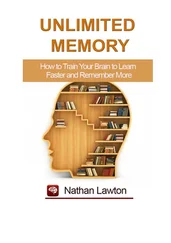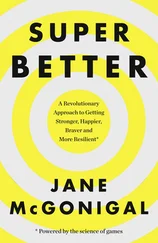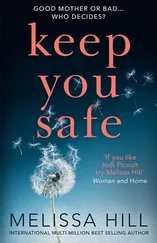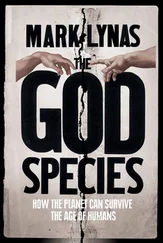13. The Cambridge physicist David MacKay: See David MacKay, Sustainable Energy—Without the Hot Air (Cambridge: UIT Cambridge, Ltd., 2009).
CHAPTER TWENTY: NOT IN OUR PLANETARY BACKYARD
1. Torino scale, a kind of Richter scale: Devised by MIT astronomer Richard Binzel in the late 1990s, the Torino scale is used to estimate the likelihood that an object will hit the Earth, as well as how much damage it might do. You can see a diagram of the Torino scale here: http://impact.arc.nasa.gov/torino.cfm.
2. NASA launched an asteroid-spotting program called Spaceguard: Read more about Spaceguard at NASA: http://neo.jpl.nasa.gov/neo/report.html.
3. bring them close to our own orbit: Generally, an object is classed as an NEO if its orbit is between 0.983 and 1.3 AU from the Sun. One AU (astronomical unit) is the average distance from the Earth to the Sun, or 149,597,871 kilometers.
4. some near misses: For a complete list of every NEO that’s flown by since 1900, you can search NASA’s database here: http://neo.jpl.nasa.gov/cgi-bin/neo_ca.
5. asteroid hunter Amy Mainzer calls one of the most hopeful: Personal interview, July 9, 2012.
6. she and her colleagues estimate: A. Mainzer et al., “Characterizing Subpopulations Within the Near-Earth Objects with NEOWISE: Preliminary Results,” Astrophysical Journal 752 (June 20, 2012): 110.
7. Run by aerospace engineer William Ailor: Personal interview, July 9, 2012.
8. a series of suggestions over the past 15 years for how we’d deal with asteroid threats: These include, among others, recommendations urging governments to gather more data on the locations of asteroids, create a governmental organization for “planetary defense,” fund tests to figure out how we could move an asteroid, and “include NEO impacts as possible disaster scenarios for disaster recovery and relief agencies.”
9. Ailor’s company, the Aerospace Corporation, did a study in 2004: You can read the entire study via NASA here: http://impact.arc.nasa.gov/news_detail.cfm?ID=139.
10. NASA’s Deep Impact mission: Learn more about Deep Impact via NASA here: http://www.nasa.gov/mission_pages/deepimpact/main/index.html.
11. In an early paper about nuclear winter: Alan Robock, “Snow and Ice Feedbacks Prolong Effects of Nuclear Winter,” Nature 310 (1984): 667–70.
12. Alex Weir, a software engineer based in Zimbabwe: Download the database here: http://www.cd3wd.com/.
13. CD3WD and similar projects can help us restart civilization: One of these is Marcin Jakubowski’s Civilization Starter Kit project. It’s a free online resource (you can print it out to prepare for an asteroid strike) that will eventually contain all the information required to make 50 crucial farming machines and sustain a small village. Find out more here: http://opensourceecology.org/gvcs.php. A slightly different example is the Svalbard Global Seed Vault, located beneath the mountains on Norway’s remote Arctic island of Svalbard, where philanthropic and diplomatic groups have paid to build a massive underground structure for seed storage. It’s designed to be a backup copy of the planet’s ecosystems in the event of a dramatic crash in biological diversity, such as what you’d see after a global disaster like a PHO impact. See more at: http://www.regjeringen.no/en/dep/lmd/campain/svalbard-global-seed-vault.html?id=462220.
CHAPTER TWENTY-ONE: TAKE A RIDE ON THE SPACE ELEVATOR
1. NASA has offered prizes of up to $2 million: Find out more about NASA’s Strong Tether Challenge, which offers up to $2 million to the team that creates an elevator cable strong enough to form the centerpiece of a space elevator, on the NASA website: http://www.nasa.gov/offices/oct/early_stage_innovation/centennial_challenges/tether/index.html.
Much like the X Prize, the Space Elevator Games are events where inventors compete for large cash prizes, in this case for viable models of space-elevator climbers and ribbon structures. ISEC, the International Space Elevator Consortium, is a group that holds annual conferences and prize giveaways for inventors and investors to explore novel materials and methods we could use to build a space elevator. This association unites groups from Europe, Japan, and America that are working on space-elevator engineering, and they also publish books and a journal devoted to designing a working space elevator.
2. a scientist named Bradley Edwards, who wrote a book about the feasibility: Though there are other models for space elevators, Edwards’s design is the one that NASA and its affiliated scientists are currently pursuing. Indeed, spaceflight engineer Peter Swan has written extensively about the process of building space elevators, and suggests that the final designs may change a great deal by the time we’re actually building the structure. See, for example, Peter Swan and Cathy Swan, Space Elevator Systems Architecture ( Lulu.com, 2007).
3. reduction in water pollution from perchlorates: See the EPA’s information about perchlorates: http://water.epa.gov/drink/contaminants/unregulated/perchlorate.cfm/.
4. NASA reports that each Space Shuttle launch cost about $450 million: See NASA’s Space Shuttle FAQ online: http://www.nasa.gov/centers/kennedy/about/information/shuttle_faq.html#10.
5. 100,000 kilometers out into space: There is some disagreement over whether this length is necessary, or whether it could be shorter. Different plans call for different lengths.
6. In 2009, NASA awarded $900,000 to LaserMotive: Clara Moskowitz, “Space Elevator Team Wins $900,000 from NASA,” MSNBC.com(January 7, 2009).
7. “I like to compare [carbon nanotube development]”: Personal interview, August 12, 2011.
8. Engineer Keith Lofstrom suggested: Personal interview, August 12, 2011: You can see his plans for the maglev platform on launchloop.com.
9. Vasilii Artyukhov argued that we might not want to use carbon nanotubes: “Making and Breaking Graphitic Nanocarbon: Insights from Computer Simulations,” Space Elevator Conference presentation, Microsoft Campus, Richmond, WA (August 12, 2011).
10. “The bottom line is that you need to find”: Personal interview, June 26, 2012.
11. Alex Hall, the senior director of the Google Lunar X Prize: “When Can I Buy My Ticket to the Moon?” Panel discussion at SETICon 11, Santa Clara, CA (June 23, 2012).
12. Bob Richards, a cofounder of Moon Express: Ibid.
CHAPTER TWENTY-TWO: YOUR BODY IS OPTIONAL
1. I visited the UC Berkeley synthetic biologist Chris Anderson: Personal interview, June 6, 2012.
2. “During a long-duration manned space flight”: Personal correspondence, June 25, 2012.
3. Still, her research and that of other geneticists working with NASA: Personal interview with Sylvain Costes, June 15, 2012. Costes works at the Berkeley Lab, researching how radiation damages DNA. His work is funded in part by NASA, and he hopes that at some point we can pinpoint regions on the genome responsible for making some people’s DNA more robust against cosmic radiation damage.
4. “I’m of the mind that we’re going to fuck everything up”: Personal interview, May 7, 2012.
5. “pollution sensing lung tumor”: You can see this design, along with several more from the Synthetic Kingdom series, on Ginsberg’s website here: http://www.daisyginsberg.com/projects/synthetickingdom.html.
6. The British author Paul McAuley has suggested in recent novels: Personal correspondence, June 12, 2012. See also The Quiet War (Amherst, NY: Pyr Books, 2009).
7. Kim Stanley Robinson, another science-fiction author: Personal interview, June 18, 2012. Robinson’s most recent novel about how synbio modifications will be part of space colonization is called 2312 (New York: Orbit Books, 2012).
Читать дальше
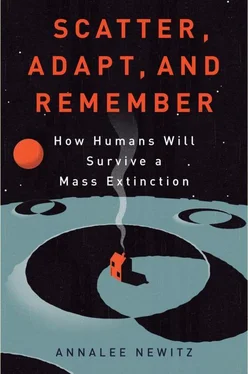





![Аннали Ньюиц - Автономность [litres]](/books/424681/annali-nyuic-avtonomnost-litres-thumb.webp)

